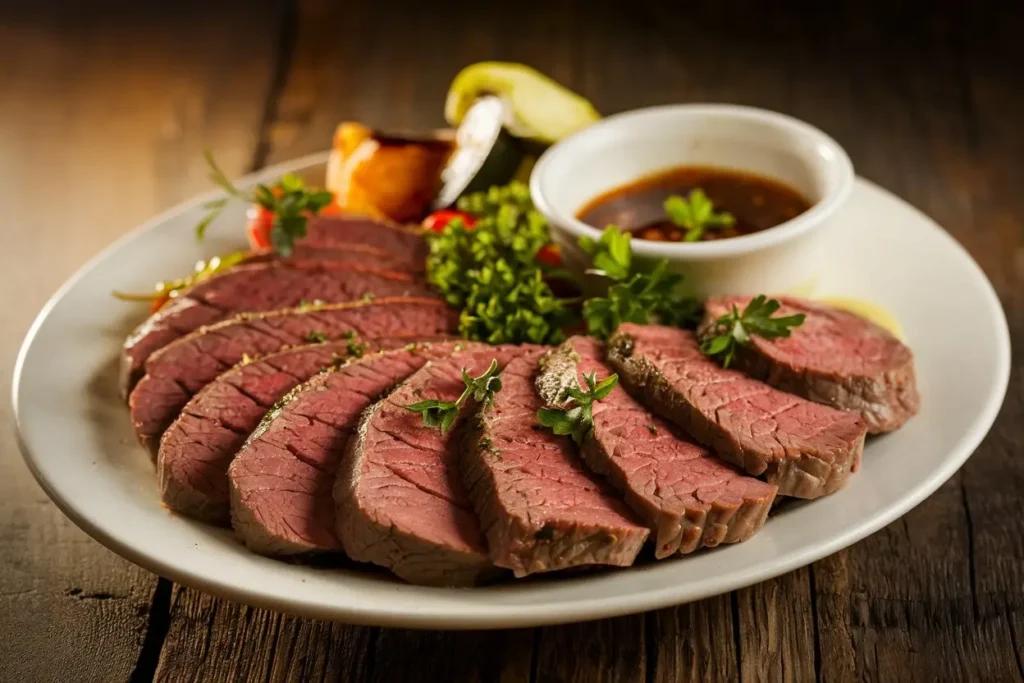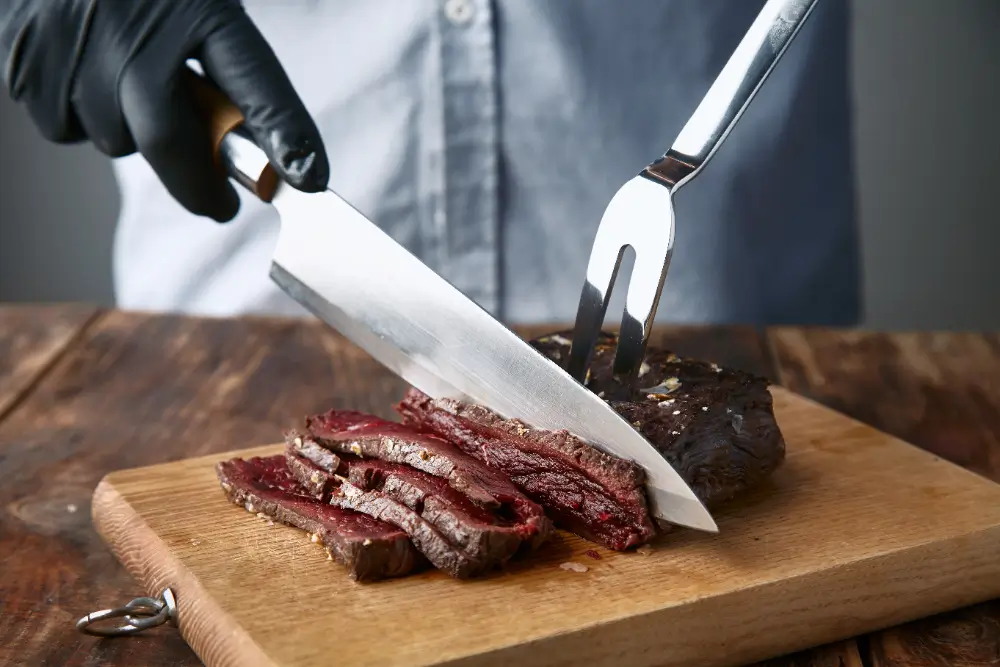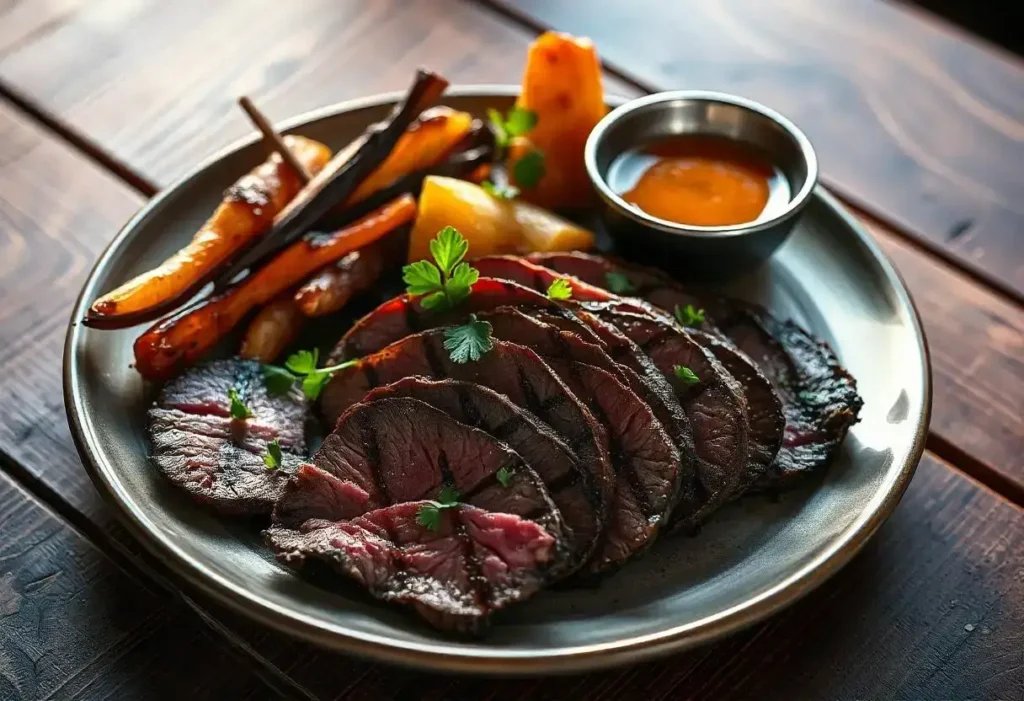Beef Heart Recipe: Delicious and Easy Ways to Cook Organ Meats
When it comes to exploring nutritious and cost-effective culinary options, organ meats have been gaining well-deserved attention. Among these hidden gems, beef heart stands out as a powerhouse of flavor and nutrition, yet it remains an underappreciated ingredient in many kitchens. If you’ve ever wondered how to make the most out of this versatile cut, this comprehensive guide to the perfect beef heart recipe will help you uncover its potential.
Cooking with beef heart might seem intimidating at first, but you’ll quickly discover that it’s not only straightforward but also highly rewarding. Its tender texture, when prepared correctly, pairs beautifully with a variety of flavors, making it an excellent choice for seasoned chefs and home cooks alike. Additionally, beef heart is remarkably affordable, making it an ideal protein source for those looking to create gourmet meals on a budget.
In this article, you’ll learn everything you need to know about crafting a delicious beef heart recipe. From preparation and cooking techniques to tips for enhancing its taste, we’ll cover it all. Whether you’re looking for a new addition to your meal rotation or simply curious about incorporating organ meats into your diet, this guide is the perfect starting point. Let’s dive in!

What Is Beef Heart?
Understanding Beef Heart as an Ingredient
Beef heart is a highly underrated and nutritious cut of meat that deserves a spot in your kitchen. As the name suggests, it is the heart of a cow, but don’t let that intimidate you—it’s far more versatile and approachable than many people think. Its flavor is surprisingly mild, often described as a richer and slightly more robust version of steak. When included in a well-prepared beef heart recipe, its unique texture and taste can elevate your meals to the next level.
This lean muscle meat is packed with nutrients, including high levels of protein, iron, zinc, and essential B vitamins such as B12. Unlike some other organ meats, beef heart has a dense, tender texture when cooked properly, making it a fantastic alternative to more common cuts of beef. It also boasts an impressive amino acid profile, which supports muscle repair and overall health.
Debunking Common Misconceptions
Many people shy away from beef heart due to misconceptions about its taste or preparation difficulty. However, it’s easier to cook than you might imagine, and with the right beef heart recipe, you can transform it into a culinary masterpiece. This cut is a prime example of how sustainable cooking and adventurous eating can go hand in hand.
Why Cook Beef Heart?
Benefits of Including Beef Heart in Your Diet
Incorporating beef heart into your meals is more than just a way to try something new—it’s a smart and health-conscious choice. This nutrient-dense cut of meat is packed with benefits that make it a standout ingredient. High in protein and low in fat, beef heart is an excellent option for anyone looking to build muscle, lose weight, or simply maintain a balanced diet. Additionally, it’s rich in essential vitamins and minerals, such as iron, zinc, selenium, and vitamin B12, which are crucial for energy production and immune system health.
When you follow a carefully crafted beef heart recipe, you’re not just making a meal; you’re creating a dish that supports your body’s overall well-being. Its amino acid profile is particularly noteworthy, aiding in muscle recovery and tissue repair.
A Sustainable and Affordable Option
Beef heart is also a shining example of sustainable cooking. By utilizing organ meats like the heart, you reduce food waste and make the most of every part of the animal. For more inspiration on how to incorporate unique and sustainable ingredients into your meals, visit Wana Recipes, a resourceful site filled with creative ideas. This cut is often much more affordable than prime steaks or roasts, making it a budget-friendly alternative for families or individuals who enjoy high-quality meals without overspending.
Unmatched Flavor and Versatility
One of the most compelling reasons to explore a beef heart recipe is its deliciously mild flavor. When prepared correctly, beef heart offers a taste and texture reminiscent of tender steak, making it a versatile ingredient that pairs beautifully with a variety of spices, marinades, and side dishes. Whether grilled, stewed, or pan-fried, beef heart is a flavorful and satisfying addition to your culinary repertoire.

Preparing Beef Heart for Cooking
Step-by-Step Guide to Cleaning and Prepping Beef Heart
Proper preparation is key to unlocking the full potential of a delicious beef heart recipe. While it may seem intimidating at first, cleaning and prepping beef heart is a straightforward process that ensures optimal flavor and texture in your dish.
- Start with Fresh Beef Heart: Look for a fresh or frozen beef heart at your local butcher or grocery store. It should have a firm texture and a deep red color.
- Trim Excess Fat and Membranes: Place the beef heart on a cutting board and use a sharp knife to remove any visible fat, silver skin, or connective tissue. These parts can be chewy and affect the final dish’s texture.
- Open and Butterfly the Heart: Carefully cut the beef heart open to expose its inner chambers. This step ensures even cooking and helps you inspect for any remaining fat or tendons that need to be removed.
- Rinse and Pat Dry: Rinse the beef heart under cold water to remove any residual blood or debris. Pat it dry with paper towels to prepare it for marinating or cooking.
Tools You’ll Need
Having the right tools on hand makes prepping the beef heart much easier. A sharp chef’s knife, a sturdy cutting board, and kitchen shears are essential for efficient preparation.
Enhancing Flavor Through Marination
To elevate your beef heart recipe, marination is crucial. After trimming, let the beef heart soak in a marinade of your choice—such as olive oil, garlic, and herbs—for at least two hours or overnight. This step tenderizes the meat and infuses it with flavor, setting the stage for a delicious meal.
Beef Heart Recipe
Classic Grilled Beef Heart Recipe
Grilling is one of the easiest and most flavorful ways to prepare a beef heart recipe. The high heat enhances the natural flavors, giving the meat a smoky, tender finish. This recipe is simple to follow and works as a great introduction to cooking with beef heart.
Ingredients Table
| Ingredient | Quantity |
|---|---|
| Beef heart | 1 (2-3 lbs) |
| Olive oil | 3 tablespoons |
| Garlic (minced) | 4 cloves |
| Lemon juice | 2 tablespoons |
| Salt | 1 teaspoon |
| Black pepper | 1 teaspoon |
| Paprika | 1 teaspoon |
| Fresh parsley | 2 tablespoons (chopped) |
Step-by-Step Instructions
- Prepare the Beef Heart: Follow the preparation steps outlined earlier, ensuring the heart is cleaned, trimmed, and butterflied for even cooking.
- Marinate the Meat: Combine olive oil, minced garlic, lemon juice, salt, black pepper, and paprika in a bowl. Place the beef heart in the marinade, ensuring it’s fully coated. Let it sit in the refrigerator for at least 2 hours or overnight for deeper flavor.
- Preheat the Grill: Heat your grill to medium-high heat (about 400°F). Lightly oil the grates to prevent sticking.
- Grill the Beef Heart: Remove the heart from the marinade and shake off any excess. Place it on the grill and cook for about 4-5 minutes per side, depending on the thickness. Use a meat thermometer to ensure the internal temperature reaches 135°F for medium-rare.
- Rest and Slice: Let the grilled beef heart rest for 5 minutes before slicing it thinly against the grain. This step ensures tenderness.
- Garnish and Serve: Sprinkle fresh parsley over the sliced meat and serve it with your favorite side dishes, such as roasted vegetables, a fresh salad, or a grain-based side like quinoa.
Why This Recipe Works
This beef heart recipe is a great starting point because it highlights the meat’s natural flavor while incorporating simple ingredients that enhance its texture and taste. The marinade tenderizes the heart, and grilling ensures a smoky, charred exterior with a juicy interior. Whether you’re new to cooking beef heart or a seasoned pro, this recipe will surely impress.

Recipe Variations
Creative Ways to Cook Beef Heart
While the classic grilled beef heart recipe is a delicious and simple choice, this versatile cut of meat lends itself well to a variety of cooking methods. Below are a few creative variations to help you explore new ways to enjoy beef heart.
1. Braised Beef Heart with Vegetables
Braised beef heart is an excellent option for those who prefer tender, slow-cooked meals bursting with flavor. Start by searing the heart in a hot pan with a little olive oil to develop a golden crust. Then, place it in a slow cooker or Dutch oven with diced onions, carrots, potatoes, and a broth made from beef stock, red wine, garlic, and thyme. Cook on low heat for 6-8 hours until the heart becomes melt-in-your-mouth tender. Serve with a crusty loaf of bread for a hearty, comforting meal.
2. Beef Heart Stir-Fry
For a quicker and lighter option, try a beef heart stir-fry. Thinly slice the beef heart into bite-sized strips and marinate it in soy sauce, ginger, garlic, and sesame oil. In a hot wok or skillet, sauté the meat with a mix of colorful vegetables like bell peppers, snap peas, and mushrooms. Add a splash of hoisin sauce for sweetness and serve over steamed rice or noodles for a balanced, flavorful dish.
3. Slow-Cooked Beef Heart Stew
A slow-cooked stew is a cozy way to showcase beef heart. Cut the heart into small chunks and combine it with root vegetables, tomatoes, and a touch of paprika. Simmer everything together for several hours until the flavors meld into a rich, savory dish. This variation pairs wonderfully with mashed potatoes or polenta.
Why Explore Variations?
Trying different approaches to a beef heart recipe not only keeps your meals exciting but also allows you to discover new ways to complement its flavor and texture. If you enjoy experimenting with beef dishes, you might also like exploring this beef back ribs recipe for another flavorful and satisfying option. Whether you prefer bold, spicy profiles or comforting, slow-cooked dishes, beef heart is adaptable to your culinary creativity.
Tips for Cooking Beef Heart
Mastering the Art of Cooking Beef Heart
Cooking beef heart may seem challenging, but with the right approach, it’s surprisingly simple to achieve a tender, flavorful result. These tips will help you get the most out of your beef heart recipe.
1. Don’t Overcook the Meat
One of the most common mistakes when cooking beef heart is overcooking it. Since it’s a lean muscle, it can quickly become tough and chewy if left on the heat too long. Aim for medium-rare to medium doneness, around 135°F to 145°F internal temperature. This ensures the heart remains tender and juicy.
2. Use Marinades to Enhance Flavor
Marinating the beef heart is an excellent way to tenderize the meat and infuse it with flavor. Opt for acidic marinades with ingredients like lemon juice, vinegar, or yogurt, as they help break down muscle fibers while adding depth to the dish. Let the heart marinate for at least two hours or overnight for best results.
3. Slice Thinly Against the Grain
When it comes time to serve your beef heart recipe, always slice the meat thinly and against the grain. This technique shortens the muscle fibers, making each bite tender and easier to chew.
4. Experiment with Cooking Methods
Beef heart is versatile, so don’t hesitate to try different cooking methods. Grilling, pan-frying, slow cooking, or stewing each brings out unique flavors and textures. Match the method to your preferred dish style.
5. Pair with Bold Seasonings
Beef heart has a rich, hearty flavor that pairs well with robust seasonings like garlic, paprika, cumin, or chili. Don’t be afraid to experiment with bold spice blends to elevate your beef heart recipe and create a truly memorable dish.
By following these tips, you’ll master the art of cooking beef heart and consistently achieve delicious results.
Storage and Leftover Tips
How to Store and Reheat Beef Heart
Proper storage and reheating techniques are essential to ensure the quality and safety of your cooked beef heart recipe. Here are some helpful tips for managing leftovers effectively.
1. Refrigeration
If you plan to eat the leftovers within a few days, store the cooked beef heart in an airtight container and place it in the refrigerator. Properly stored, it will remain fresh for up to 3-4 days.
2. Freezing
For longer storage, freeze the cooked beef heart. Slice it into manageable portions, wrap each piece tightly in plastic wrap or aluminum foil, and store them in a freezer-safe bag or container. Frozen beef heart can last up to 3 months without losing quality.
3. Reheating
To maintain the texture and flavor of your beef heart recipe, reheat it gently. Use a skillet over low heat or an oven set to 300°F to avoid overcooking the meat. Adding a splash of broth or sauce can help restore moisture.
4. Repurposing Leftovers
Get creative with your leftovers by incorporating them into new dishes. Thinly sliced beef heart can be added to salads, sandwiches, or stir-fries, giving you a variety of ways to enjoy your meal again.
With these storage and reheating tips, you can maximize the value of your beef heart recipe and ensure every bite is as delicious as the first.
FAQs About Beef Heart Recipe
1. What is the best way to eat beef heart?
The best way to enjoy beef heart depends on your taste preferences and cooking skills. A classic beef heart recipe often involves grilling or pan-searing, which enhances its natural flavor while keeping the meat tender. Thinly slicing the heart and pairing it with flavorful sides like roasted vegetables or fresh salads is a popular choice. For those who enjoy slow-cooked meals, braising or stewing beef heart with aromatic herbs and root vegetables creates a hearty, comforting dish. Stir-fries and tacos are also excellent options for adding bold flavors to thinly sliced beef heart.
2. Is eating beef heart healthy?
Yes, beef heart is incredibly healthy! It’s a nutrient-dense protein source packed with essential vitamins and minerals. A serving of beef heart provides high levels of iron, zinc, selenium, and vitamin B12, which are crucial for energy production and maintaining overall health. Additionally, beef heart contains Coenzyme Q10 (CoQ10), an antioxidant that supports heart health and cellular energy. When prepared in a well-balanced beef heart recipe, it’s an excellent addition to a nutritious diet.
3. Should beef heart be soaked before cooking?
Soaking beef heart before cooking is not always necessary but can enhance its texture and flavor. Some cooks prefer to soak the heart in cold water or milk for 1-2 hours to remove any residual blood and mild gaminess. This step is particularly helpful if you’re new to cooking organ meats or want to achieve a milder taste in your beef heart recipe. After soaking, be sure to rinse and pat the heart dry before proceeding with the recipe.
4. Does heart taste like beef?
Yes, heart does taste like beef, but it has a slightly different flavor profile. Beef heart has a rich, robust taste similar to a well-marbled steak, but it’s leaner and more tender when prepared correctly. Its unique flavor shines in a beef heart recipe, especially when paired with marinades or spices that complement its natural savoriness. If you enjoy beef, chances are you’ll appreciate the hearty taste of this cut.
Conclusion
Why You Should Try a Beef Heart Recipe
Cooking a beef heart recipe is not only a culinary adventure but also an opportunity to explore a nutrient-packed, budget-friendly, and sustainable ingredient. While organ meats like beef heart are often overlooked, their rich flavor, tender texture, and versatility in the kitchen make them a valuable addition to your meal repertoire. From grilled and stir-fried dishes to slow-cooked stews, beef heart adapts beautifully to a range of cooking styles, allowing you to experiment with flavors and techniques.
The Benefits Go Beyond the Plate
A well-prepared beef heart recipe doesn’t just delight your taste buds; it also supports your health. High in protein, essential vitamins, and minerals like iron and zinc, beef heart is a powerhouse for your body. Its affordability and ability to reduce food waste make it a sustainable choice that aligns with mindful eating practices.
A Call to Action
Now that you have the knowledge and tools to prepare a delicious beef heart recipe, it’s time to bring this unique cut of meat to your table. Whether you start with the classic grilled recipe or experiment with creative variations, you’re sure to impress yourself and your loved ones with your culinary skills. Don’t forget to share your experiences and inspire others to try beef heart as well. Happy cooking!



1 thought on “Beef Heart Recipe: A Nutritious and Delicious Dish You’ll Love to Cook”